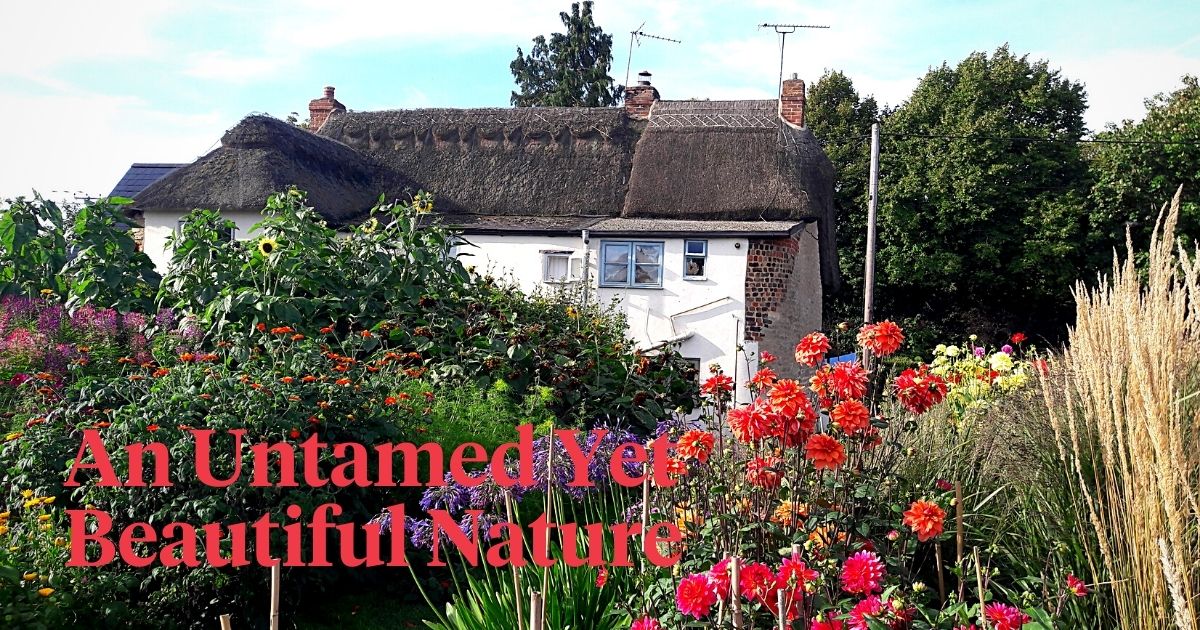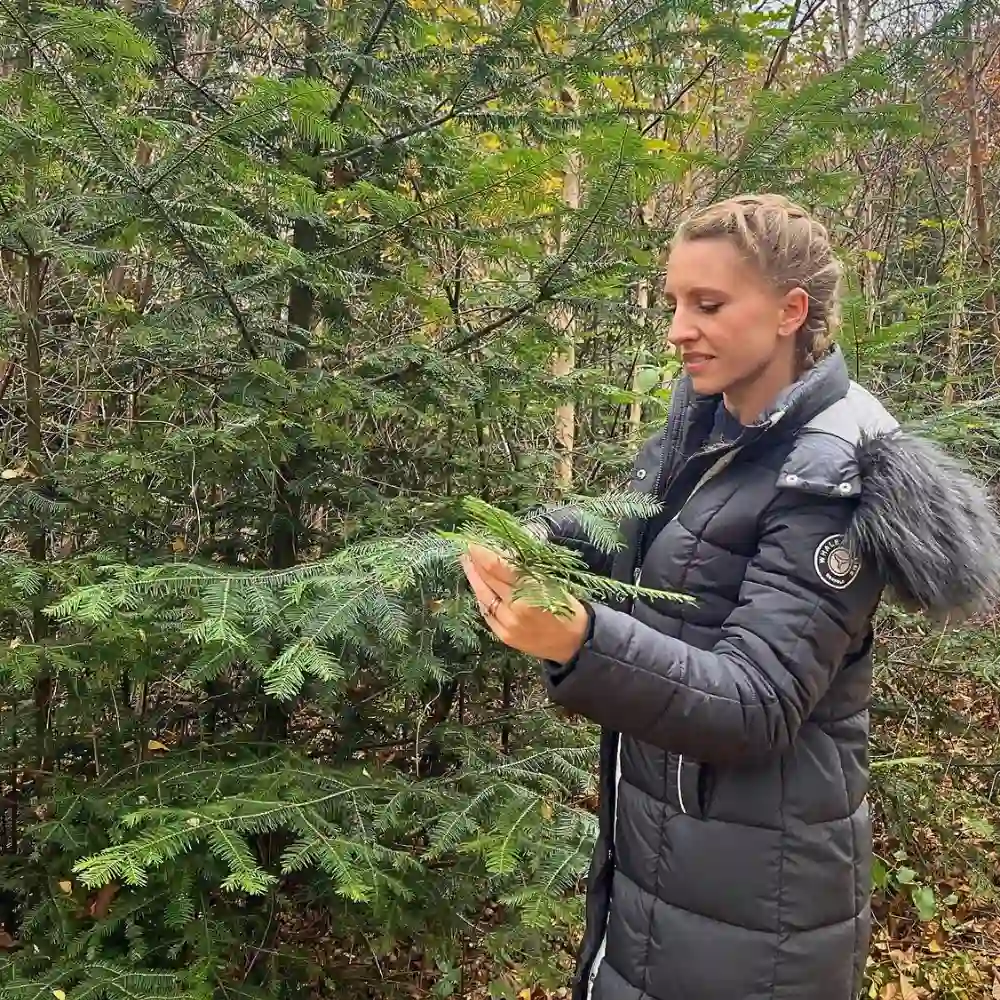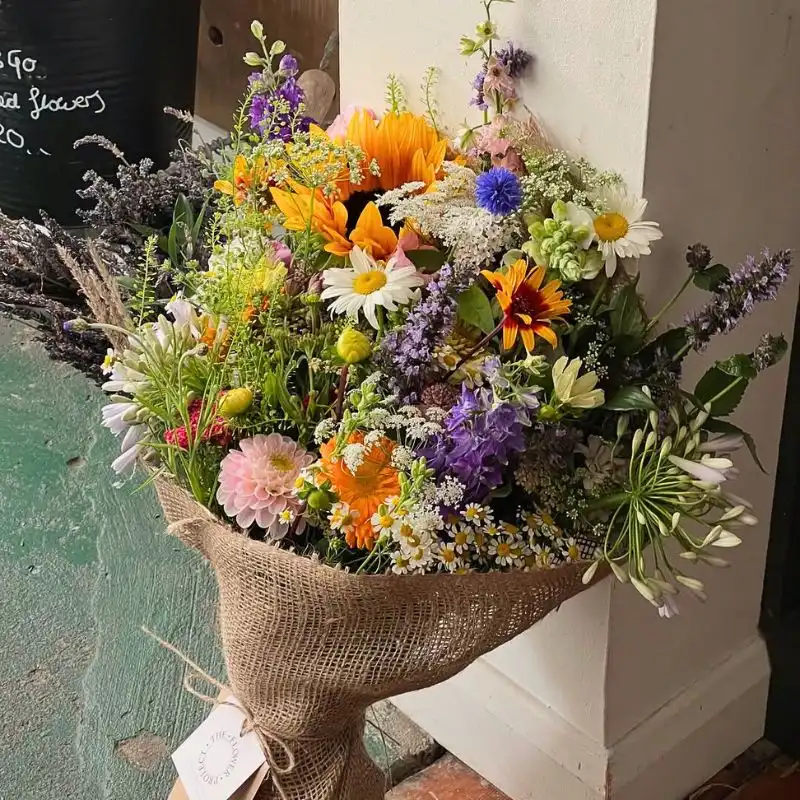When one thinks of a garden, the impression conjured up in their minds is often always an image of carefully manicured lawns and perfectly pruned hedges. However, there's a time-honored gardening style that embraces a different philosophy. That’s the concept of cottage gardens. These practically magical spaces are known for their quirky and dreamy appeal. They celebrate nature’s beauty in its most unbridled form.
Cottage gardens have an enduring appeal that goes beyond time and trends. With their fanciful and quixotic flowering spaces, these gardens arouse a sense of nostalgia and beauty. Entrenched in history, cottage gardens are a celebration of nature's copiousness and the human desire to create enthralling landscapes.
The Ideals of Cottage Gardens
There are numerous theories that attempt to explain the origins of cottage gardens. English in origin, these whimsical gardens are believed to have developed during the Elizabethan times as a local source of herbs and fruits. One such theory is that they arose due to the Black Death of the 1340s when the death of many laborers made land available for small cottages with personal gardens.
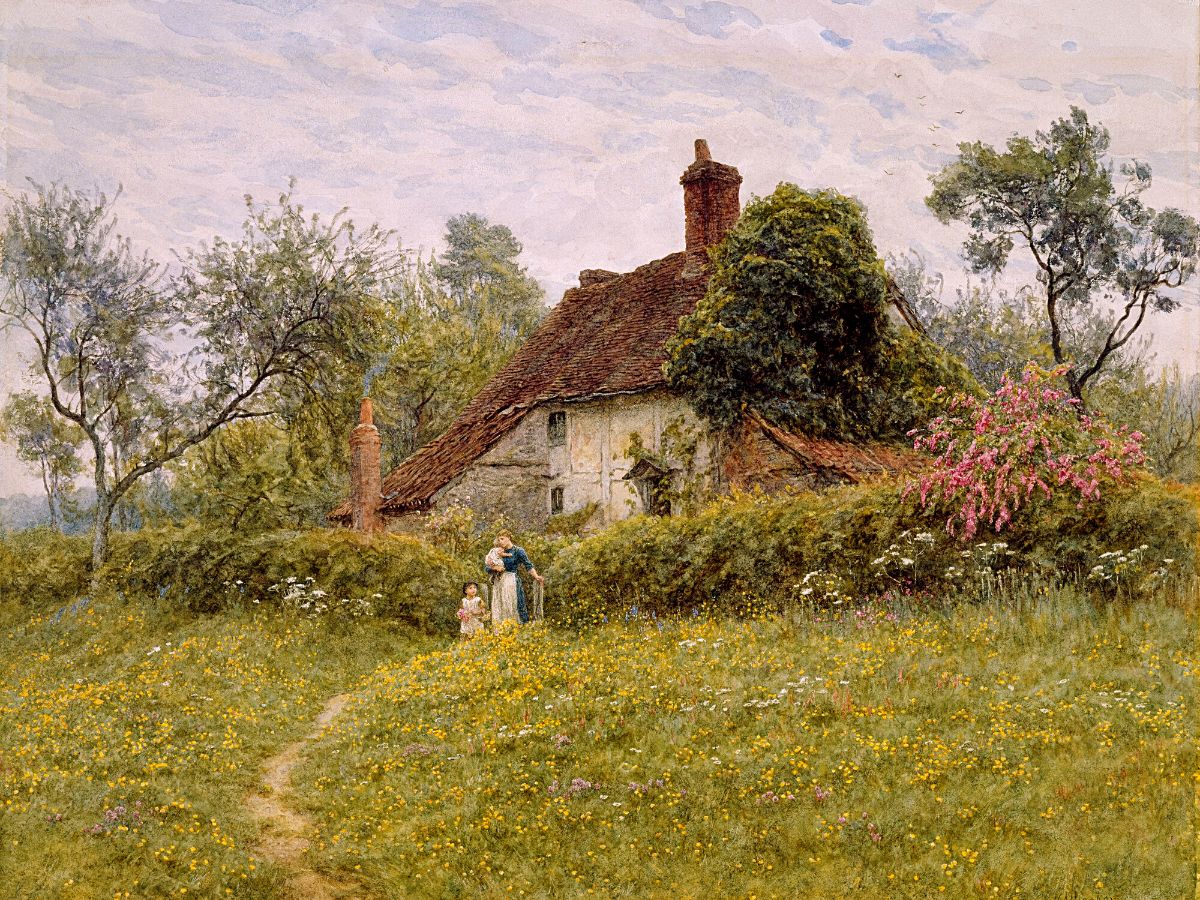
Photo by Birmingham Museums Trust
However, North Carolina State University indicates that cottage gardens have their roots dating back to the late 1400s, and the main plants were edibles and medicinal plants, including vegetables, herbs, and fruit trees while flowers were of less importance then. Later becoming more stylized, the gardens often surrounded the quaint cottages of the working class and were traditionally established around small, humble dwellings and aimed to provide some sustenance, beauty, and a sense of place.
The fundamental ideals of cottage gardens often reflect the lifestyle and values of their owners. For instance, they tend to be informal and are the antithesis of formal gardens. They embrace a wild and haphazard charm, where nature's chaos reigns supreme. Plants are allowed to grow freely, and there's no strict layout or design.
A key defining feature of cottage gardens is the chaotic profusion of flowering and other plants. These gardens are ever bursting with vibrant colors, textures, and scents, creating a visually stunning mixture of plants and blooms. Flowers like roses, hollyhocks, foxgloves, and lavender are commonly found in cottage gardens, adding to their romantic allure. In the overflowing cornucopia of plants and flowers, you'll find a harmonious mix of perennials, annuals, herbs, and shrubs, all jostling for space. Ideally, the idea is to create an unrestrained mix of colors, shapes, and scents.
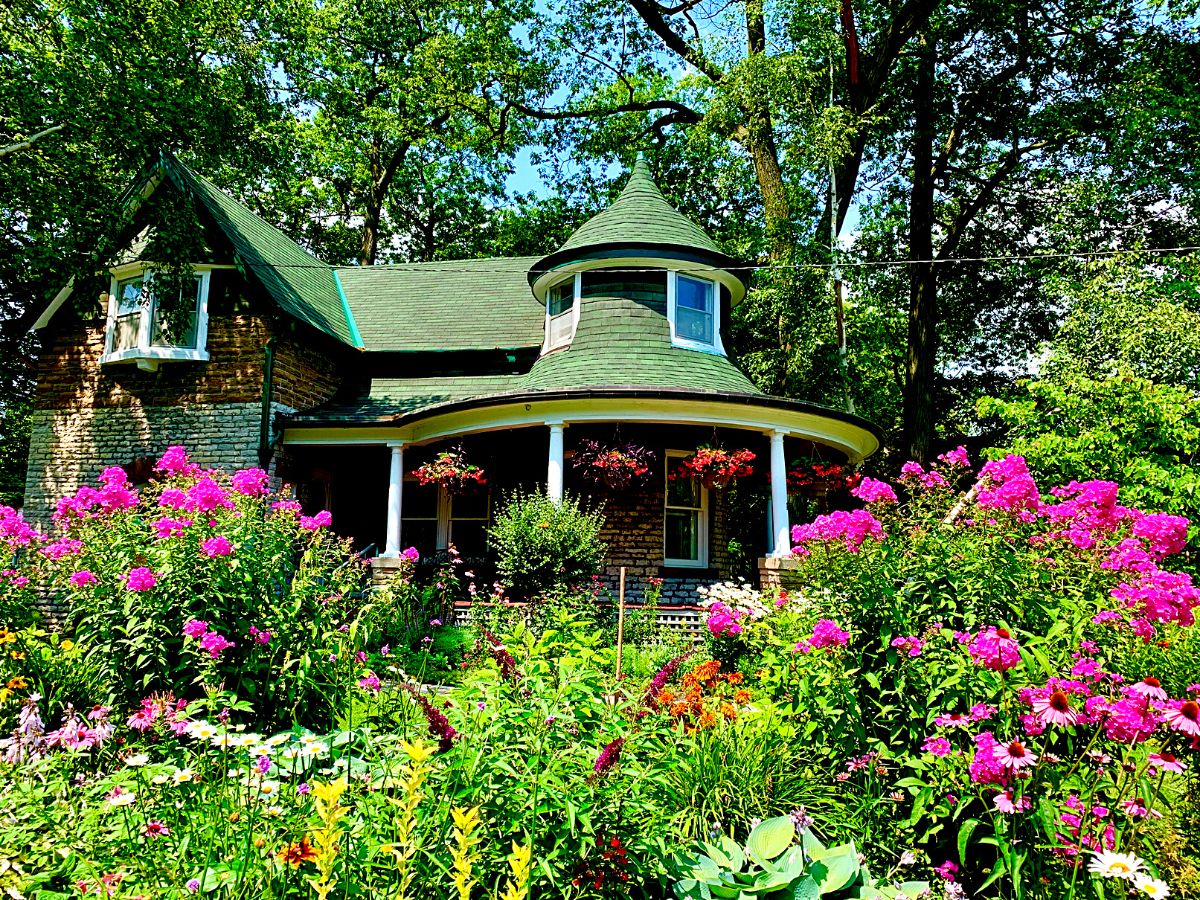
Photo by Ian Kirkland
Cottage gardens also emphasize a mixed planting style where flowers, herbs, and vegetables coexist pleasantly. This intermingling of species helps create a balanced ecosystem, attracting beneficial insects and birds while reducing the risk of pests. It also ensures a continuous display of color and interest throughout the growing season.
The gardens also embrace an informal and naturalistic layout, often characterized by curved paths, meandering borders, and hidden nooks. This layout mimics the irregularity of nature, giving the garden a pleasant and relaxed atmosphere. Plus, the gardens often include rustic and informal structures, such as wooden arbors, trellises, and picket fences. These structures support climbing plants and create vertical interest in the garden. The structures also provide a sense of enclosure and intimacy, enhancing the romantic charm of the space.
Historically, cottage gardens were not only ornamental but also practical. They often included vegetables, fruit trees, and medicinal herbs, providing sustenance and remedies for the cottage's inhabitants. Among the plants grown in these cottage gardens include delphiniums, larkspurs, English lavender, common foxgloves, hollyhocks, snapdragons, sweet peas, and the celebrated irises, among numerous others.
What’s more, contemporary cottage gardens engage all the senses. The riot of colors, the songs of birds, the fragrant blooms, and the texture of various plants offer a multisensory experience. In the same way, these gardens invite a diverse range of pollinators and other wildlife. This not only enhances their ecological value but also contributes to the idyllic atmosphere.
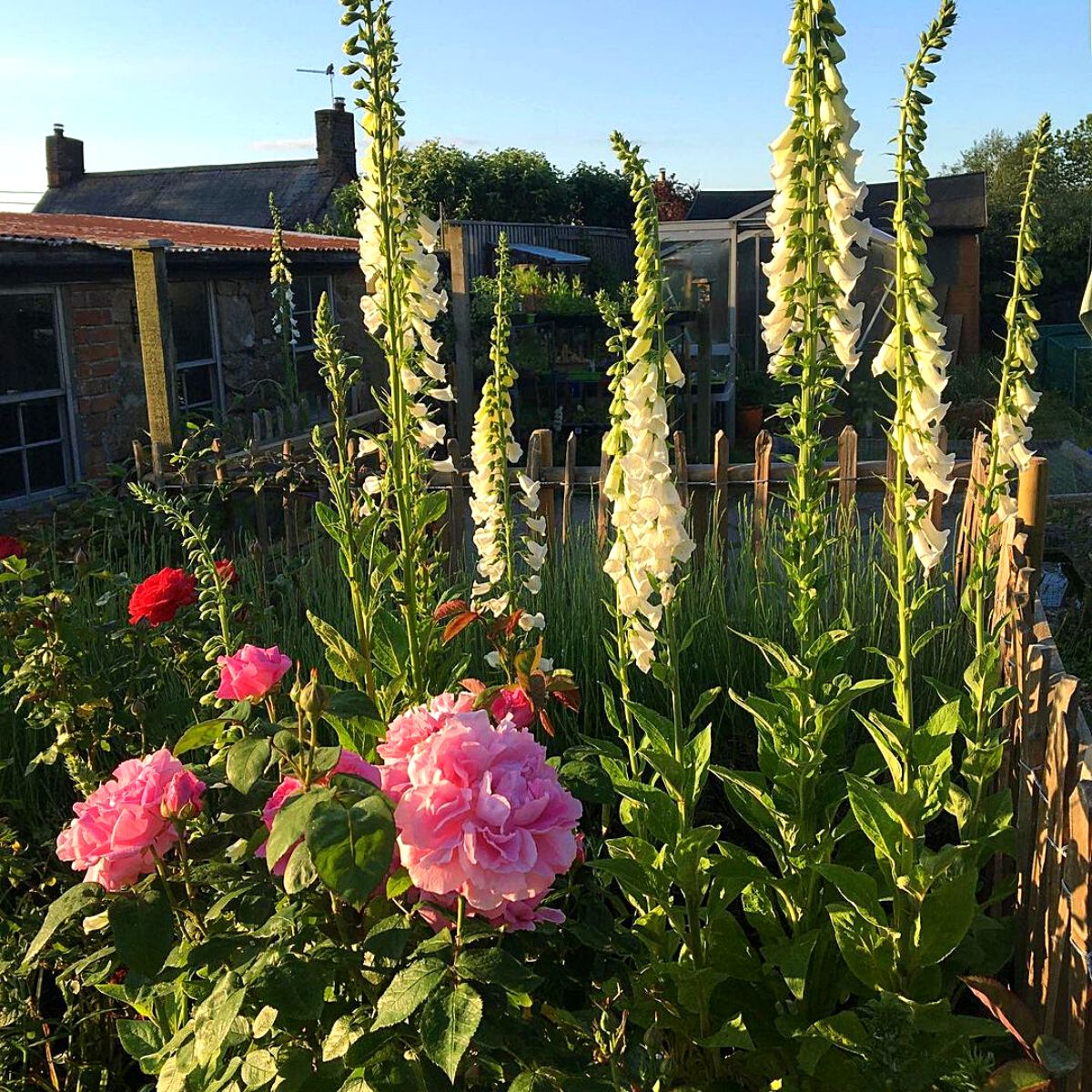
These gardens also have a sustainability element in them. Modern cottage gardens, for instance, often incorporate sustainable gardening practices that use organic materials and avoid synthetic pesticides. This aligns with the tradition of self-sufficiency and harmony with nature.
Benefits of Cottage Gardens
Cottage gardens are good for people in both practical and emotional contexts. They are not just aesthetically pleasing but also offer an overabundance of benefits to those who tend to them or simply enjoy their beauty. These gardens are a feast for the senses. They delight the eye with their vibrant colors and fragrant blooms and provide a visually pleasing and relaxing environment, offering a break from the pressures of everyday life.
They also allow people to reconnect with nature and experience its marvels firsthand. Spending time in these gardens can promote a sense of well-being, reduce stress, and improve mental health. Gardening, after all, has been linked to reduced stress and improved mental well-being. Plus, the organic, ever-changing nature of cottage gardens offers a perfect environment for relaxation and mindfulness.
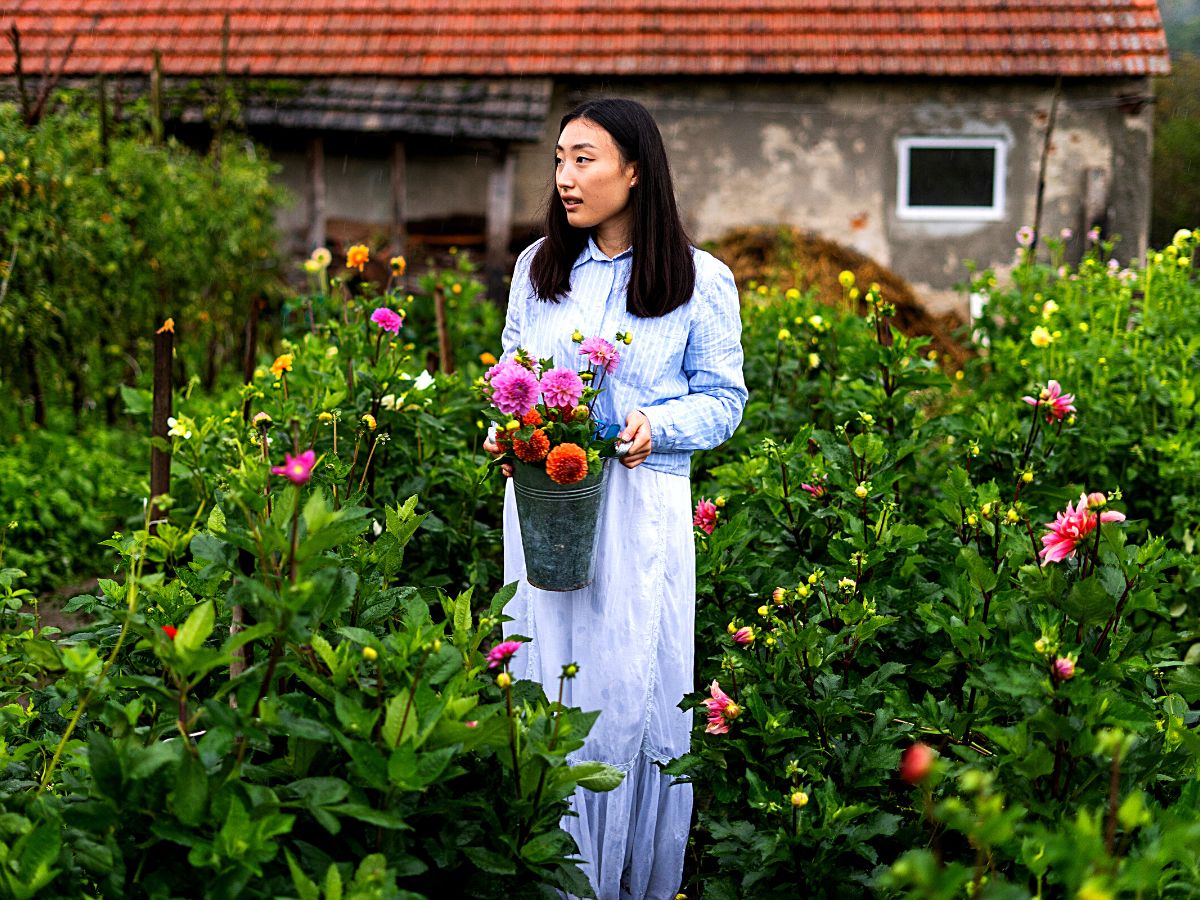
In embracing a mixed planting style, cottage gardens support biodiversity which is a key aspect of nature sustainability. These gardens attract pollinators, beneficial insects, and birds. They, practically, contribute to the local ecosystem and create a sustainable habitat for wildlife. The diverse mix of plants in cottage gardens creates a haven for this wide array of wildlife, promoting biodiversity in urban and suburban environments.
In addition, cottage gardens can be excellent teaching tools. They offer a living classroom where people can learn about botany, ecology, and sustainability. At the same time, they preserve a valuable aspect of horticultural history by reflecting the traditions and lifestyles of a past age.
Additionally, these gardens enhance self-sufficiency in fresh food. In their early days, cottage gardens served as a source of sustenance for families, and today, they can still provide fresh herbs, fruits, and vegetables.
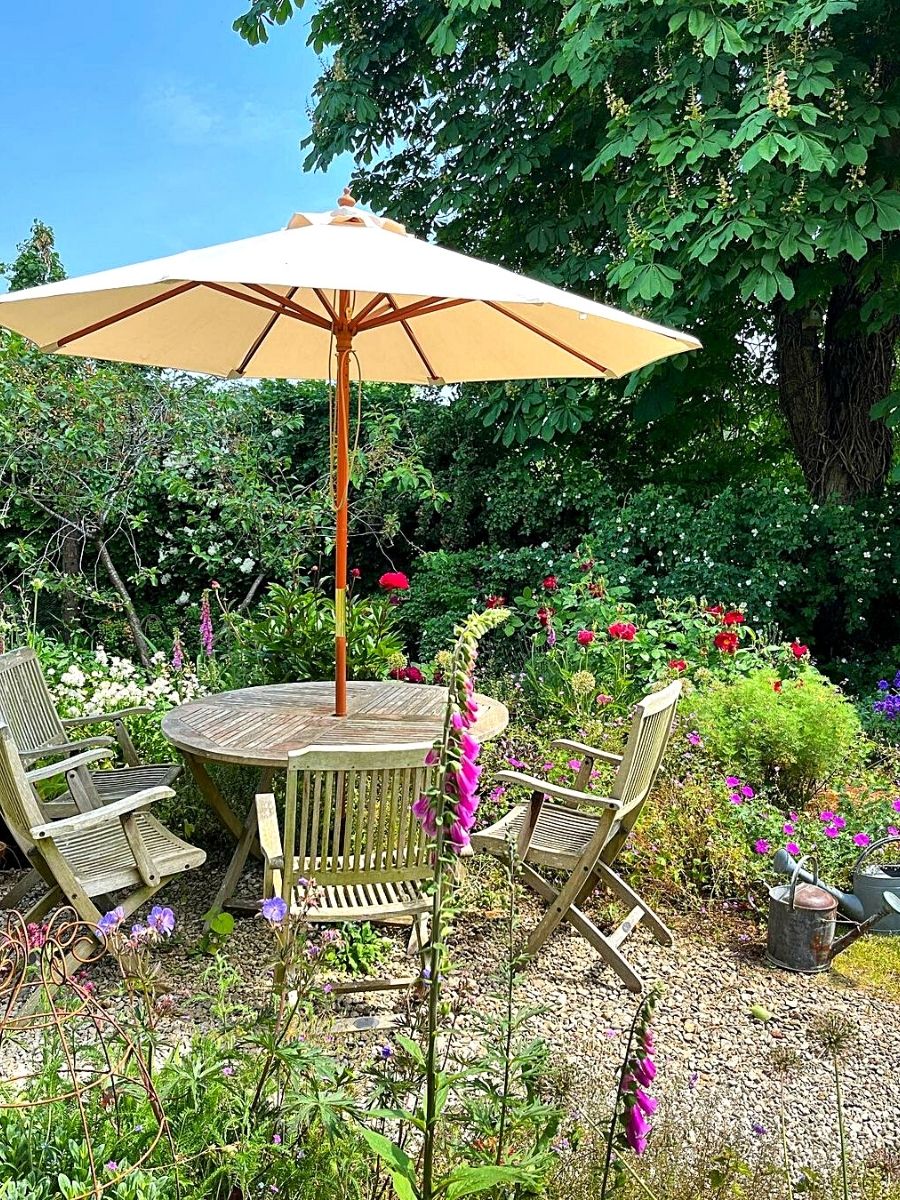
Photo by @english_cottage_garden on Instagram
A Cultural Heritage Domiciled in Famous Age-Old Cottage Gardens
Did you know that throughout history, cottage gardens have always made their mark? Some have even been immortalized in literature where they have gained fame through their fascinating histories! Well, here are some.
Shakespeare's Garden
Though not strictly a cottage garden, Shakespeare's childhood home in Stratford-upon-Avon boasts a beautiful garden that is reminiscent of the cottage garden style.
This garden is complete with fragrant herbs, colorful flowers, and whimsical topiaries. It is one garden that presents a lasting impression of the everlasting appeal of cottage gardens.
Beatrix Potter's Hill Top Farm
Hill Top Farm is a farmhouse retreat located in a town called Near Sawrey, Cumbria, England. It was the muse for Beatrix Potter’s little books and is now owned by the National Trust. The beloved author of 'The Tale of Peter Rabbit' found inspiration in this cottage garden that has a delightful mix of vegetables, herbs, and flowers, showcasing the practical and ornamental aspects of cottage gardening.
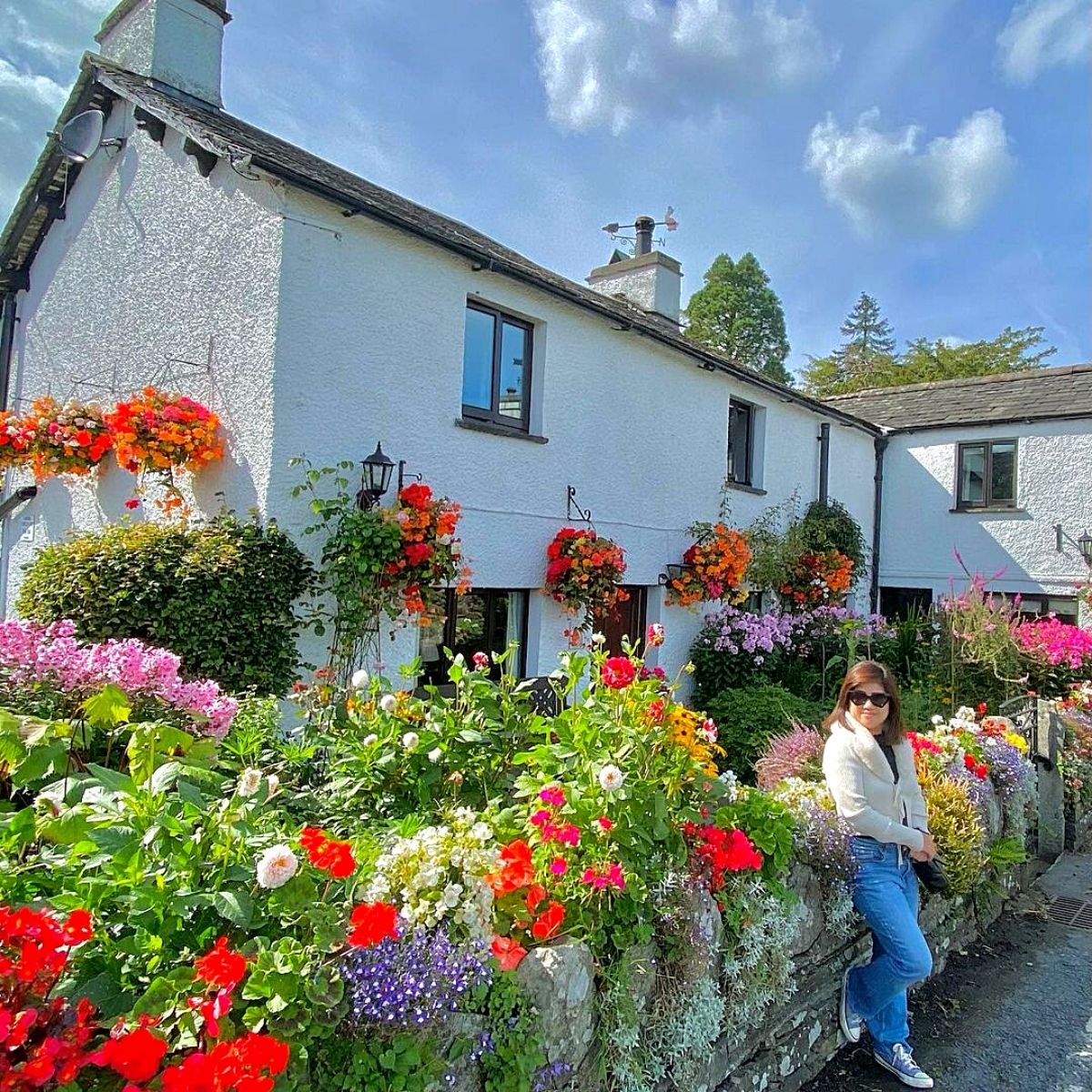
Photo by @poppythewanderlust on Instagram
Monk's House Garden
A former home of Virginia Woolf, Monk's House Garden is a quintessential cottage garden that features an array of flowers, including roses, lupines, and irises. It is enclosed by a rustic brick wall, creating a private and intimate space. It is also surrounded by incredible views of the Sussex Downs.
With its borders packed full of herbaceous perennials, climbers adorning flint walls, a productive orchard, and water features, this dense garden is just as charming as the house it hosts.
The White Garden at Sissinghurst Castle
Created by Vita Sackville-West, a poet and writer, with her husband Harold Nicolson, an author and diplomat, the White Garden is an iconic cottage garden known for its monochromatic scheme of white flowers.
It exudes an almost ethereal and romantic atmosphere, fascinating visitors with its serene beauty. Essentially, Vita decided that only the colors of white, green, grey, and silver were to be allowed to grow in this garden and it's now one of the most celebrated areas at Sissinghurst.
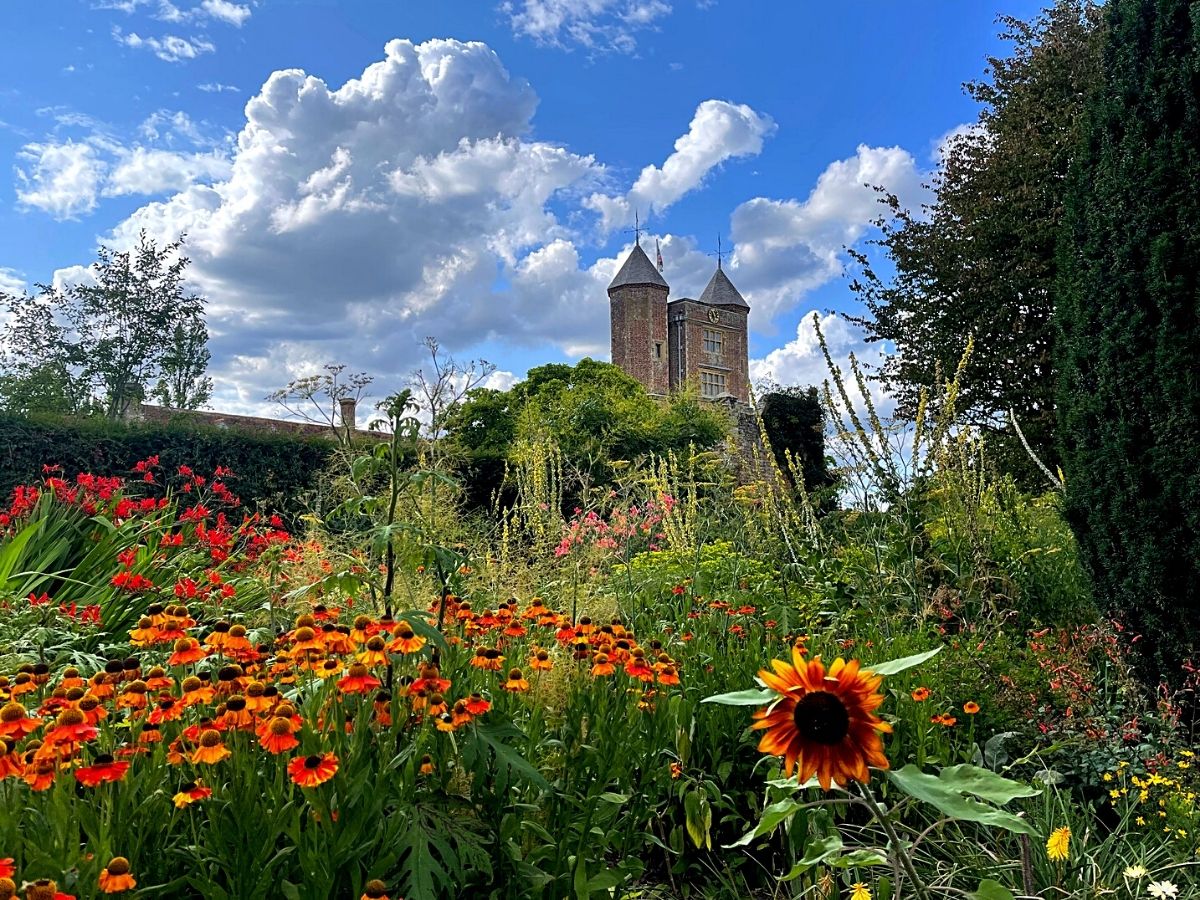
Photo by @SissinghurstNT
Frances Hodgson Burnett's ‘The Secret Garden’
Although fictional, The Secret Garden epitomizes the enchanting qualities of cottage gardens. It represents a hidden sanctuary where neglected spaces are transformed into places of beauty, healing, and personal growth.
While the garden in this classic novel is more of a hidden, neglected allotment than a traditional cottage garden, it still encapsulates the enchantment of a secret cottage garden, with its overgrown, forgotten beauty springing back to life as the story unfolds.
Cottage Gardens Have a Wild Appeal That Will Charm You!
With their wild exuberance and old-world charm, cottage gardens have the power to transport one to the simpler, more pleasant times devoid of the hustles of urbanity.
Rooted in history, these gardens exemplify timeless ideals that celebrate nature's abundance and the human desire for untamed beauty and a connection to the natural world.
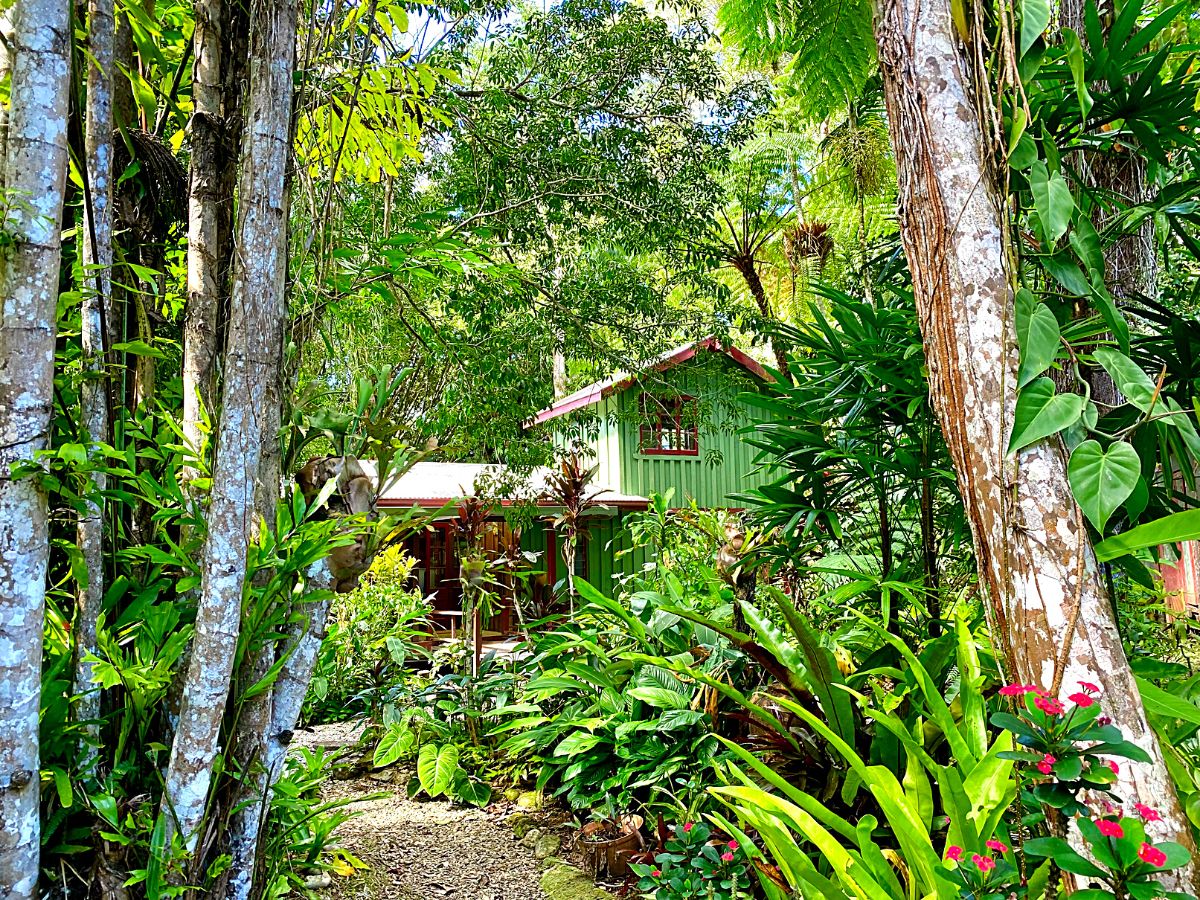
They could also be a sign of the ability of humans and nature to thrive alongside each other while basking in their beauty and sustenance. Their wild appeal, definitely, takes one to places where they’d feel at peace!
Feature image by @SissinghurstNT, header image by Judaline Goon.

